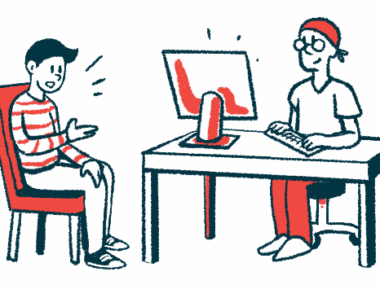Long-term Forteo Found to Safely Treat Hypoparathyroidism in Boy With Jacobsen Syndrome
Written by |

Long-term treatment of hypoparathyroidism with Forteo (teriparatide), a lab-made version of the parathyroid hormone, was safe and reduced the need for supplemental therapies in what researchers describe as the first case of the condition in a child with Jacobsen syndrome (JS).
The report, “Ten-year use of recombinant parathyroid hormone for the treatment of hypoparathyroidism in a boy with partial Jacobsen syndrome,” was published in the journal Pediatric Endocrinology Diabetes and Metabolism.
Hypoparathyroidism is characterized by insufficient levels of parathyroid hormone (PTH), resulting in calcium deficiency and abnormally high levels of phosphorus in the blood. In children, hypoparathyroidism is more often caused by genetics and may occur in association with non-parathyroid-related disturbances (called syndromic hypoparathyroidism), such as DiGeorge syndrome.
Standard treatments for hypoparathyroidism include calcium and vitamin D supplements, which increase the risk of elevated calcium in urine, calcium deposits in the kidneys, and impaired kidney function. Additional therapies, such as thiazide diuretics, are frequently used to reduce the risk of long-term complications.
PTH replacement therapy with Eli Lilly‘s Forteo, a treatment approved in the U.S. for osteoporosis in postmenopausal women and in men at high risk of breaking a bone, is rarely used in children due to a safety warning based on reports of osteosarcoma (bone cancer) in animal studies. Specifically, Forteo is an engineered fragment of PTH (PTH 1-34) given by injection.
Jacobsen syndrome, a rare genetic disorder caused by a partial deletion in chromosome 11, is characterized by stunted growth, intellectual disability, and distinct facial features such as droopy eyelids and downturned corners of the mouth. While several hormonal disorders, including hypothyroidism and type 2 diabetes, have been reported in these patients, hypoparathyroidism has not.
This case report from India describes a 5-year-old boy with JS who was treated for hypoparathyroidism with Forteo over 10 years.
He had stiff limbs and vocal cord spasms, which he had experienced six months before. The boy also exhibited delayed social and language development, learning impairments, and facial features characteristic of JS.
After blood analysis revealed low calcium and PTH, and high phosphate levels, he was given a provisional diagnosis of syndromic hypoparathyroidism and treated with calcium and vitamin D supplements. DNA analysis failed to identify any mutations in hypoparathyroidism-linked genes. However, chromosome analysis revealed a partial deletion in chromosome 11 that contained approximately 20 genes. Taken together with the facial features and intellectual disability, this led to a diagnosis of partial JS.
The patient received high doses of oral calcium supplements in the year following his diagnosis, which led to clinical improvement. However, he subsequently showed high urine calcium levels and kidney stones, prompting the start of a 10-year treatment with Forteo.
Over the next several years, the patient experienced fluctuations in blood calcium levels requiring changes to his calcium intake. By year eight, he discontinued oral calcium.
Forteo’s dose was gradually decreased from 0.90 to 0.26 micrograms/kg/day in year 10, although PTH levels remained low. A decade into treatment, the patient had normal bone mineral density and bone turnover.
“In view of several disadvantages of conventional treatment of [hypoparathyroidism] in children … the use of [Forteo] is probably justified despite the theoretical risk of osteosarcoma,” the researchers wrote. Yet, regular screening for bone tumors should continue in all patients on such treatment, they added.




